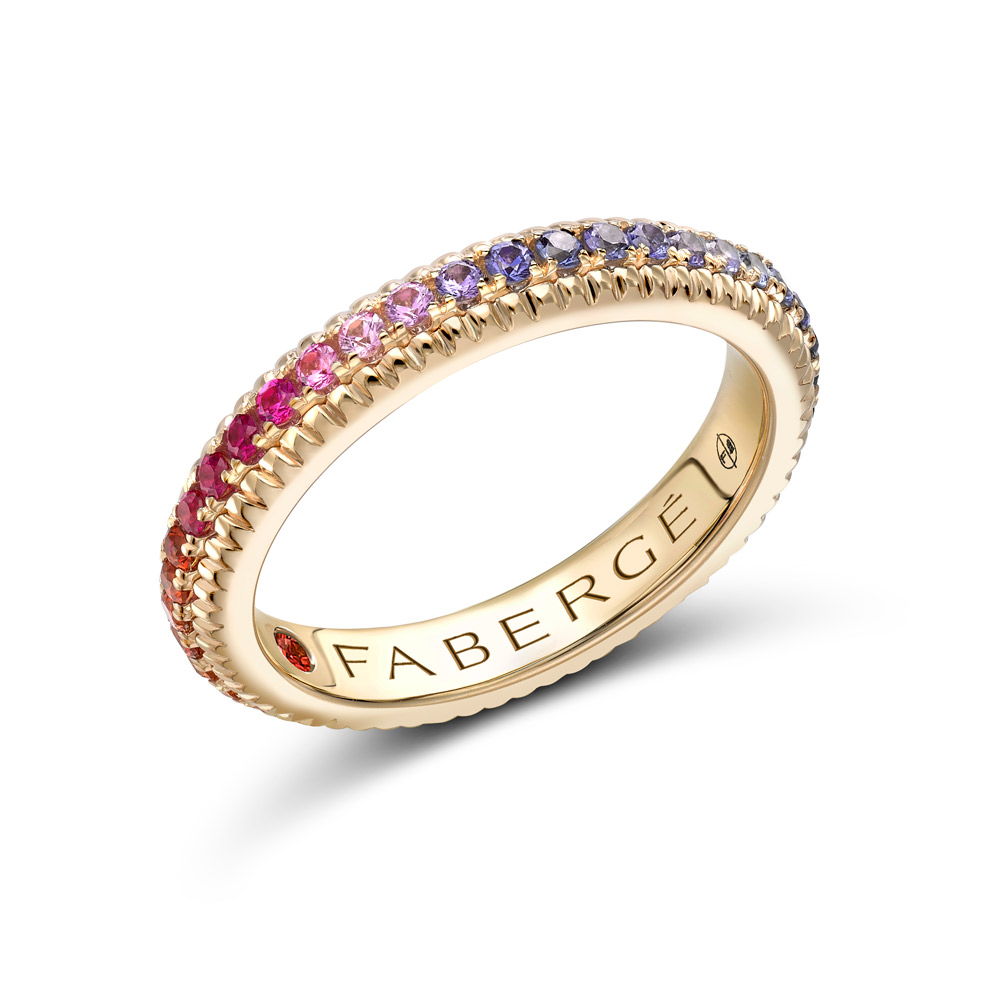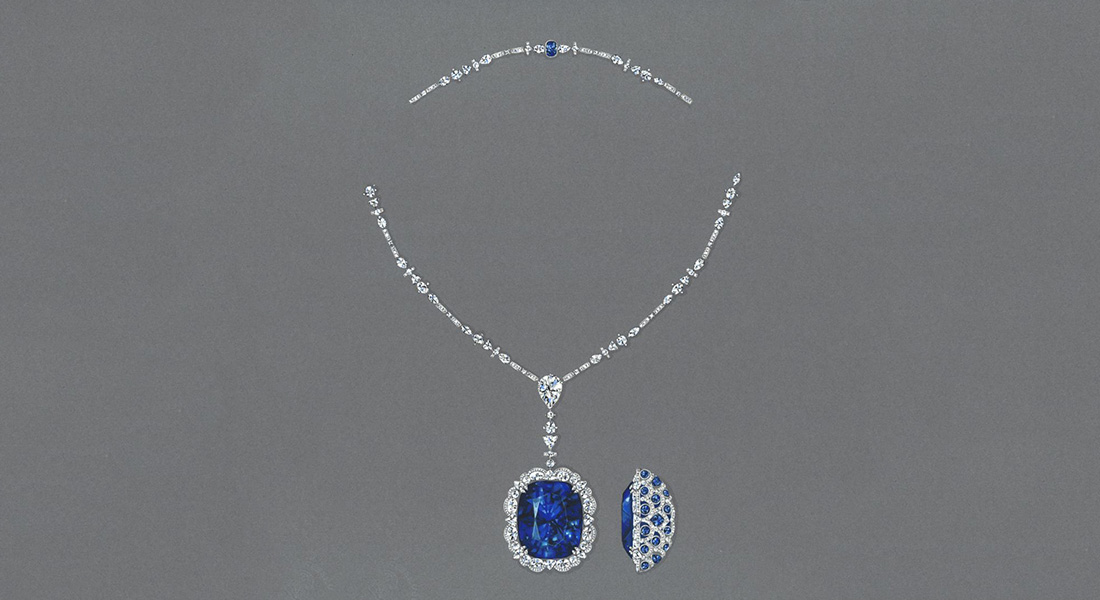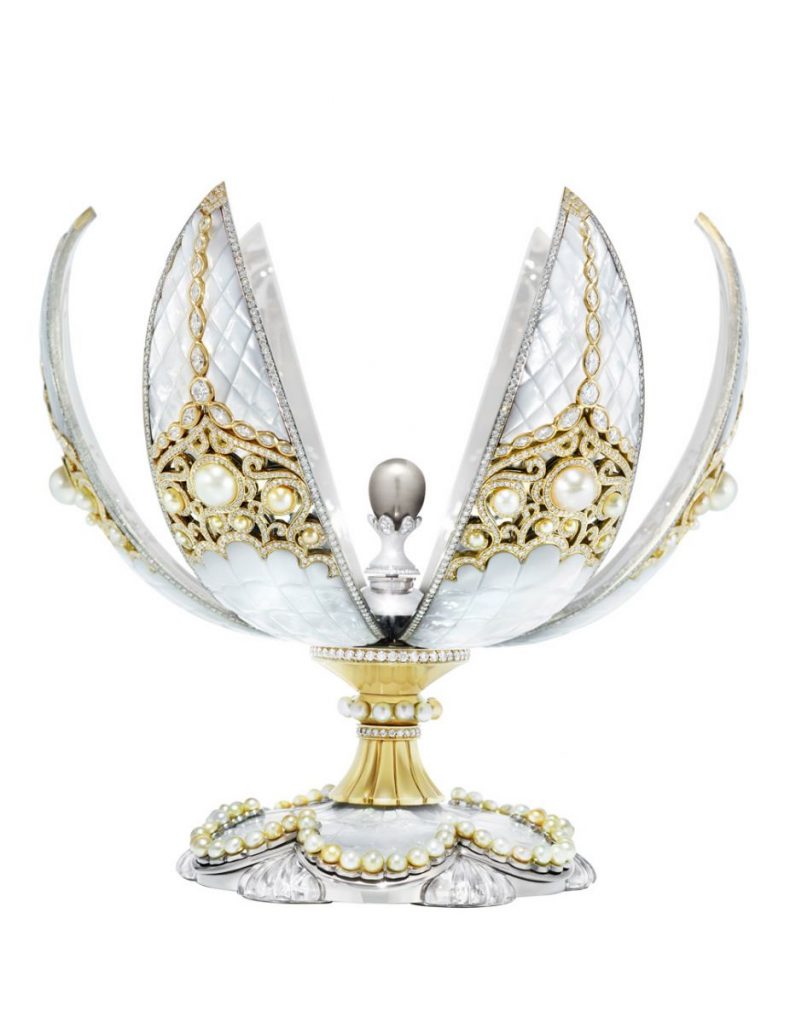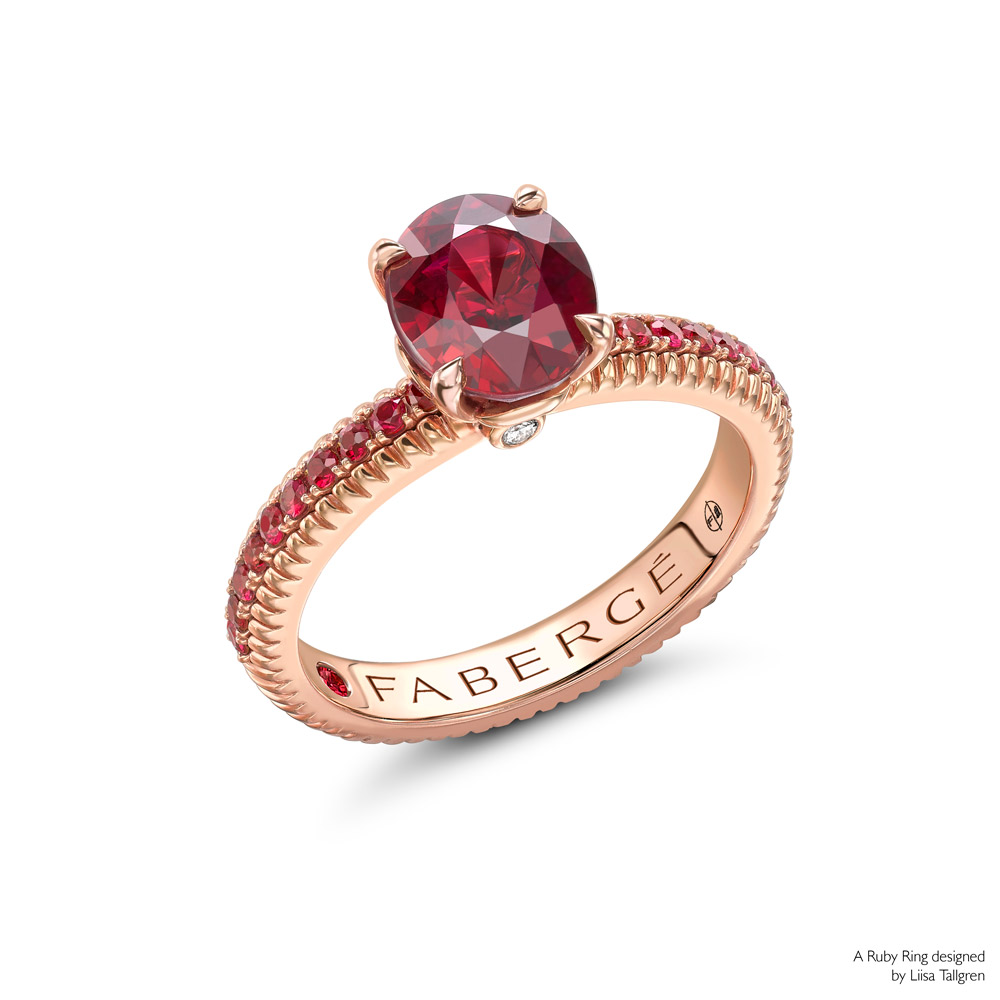The mark of a great jeweller is their ability to find beauty in anything and transform that beauty to timelessness. Those at Fabergé do nothing less. In conversation with Liisa Tallgren, here is a deep dive into what drives the in-house designer, as well as the soul of the house
‘Exquisite’, ‘ornate’, ‘bespoke’ and ‘precious’ all describe the human expression for jewellery: an incredible asset for the wearer and a visual pleasure for the viewer. It is often said that you don’t truly know (someone) until you’ve seen their jewellery. But one may wonder, what about those who made the jewellery itself? Well, the mark of a great jeweller is their ability to find beauty in anything and transform that beauty to timelessness. Those at Fabergé do nothing less.
In 19th century Russia, when Tsar Nicholas I ruled his giant kingdom, the legendary House of Fabergé was founded. In 1842 to be precise, Gustav Fabergé created the namesake label in the town of Saint Petersburg. With an incredible history and legacy in jewellery making, it has switched hands multiple times since the passing of its founder with its philosophy changing with each transition. Today, Fabergé is reputed for its historical, iconic creations, including the imperial Easter eggs, thus revisiting its past to lure the future.
A True Artist in Jeweller’s Disguise
Jewellers, like all other artists, need immense discipline. As said beautifully by Peter Carl Faberge, “since there is nobody to scold me, I have to do it myself”. For Liisa Tallgren, designer at Faberge, this discipline is driven by her passion for jewellery and precious materials. And if you need proof of that, it can be seen in her favourite creation, which was also her first-ever at the House: the ‘Pearl Egg’.
Each pearl in the piece is natural, created by chance in nature and not cultivated like most pearls today; very much like the Fabergé woman, they are truly one of a kind,. “The design came out of thoughts of the ocean and the oysters that made the pearls: slowly, underwater and by themselves,” she says. Nostalgically reminiscing on the subject of Easter eggs, Ms. Tallgren shared that her grandfather had fled from St. Petersburg during the Russian revolution. At the time, he gifted a beautifully decorated golden egg pendant to her grandmother as an engagement gift, which marked the birth of an avid collector; be it wooden, porcelain or even felt, her grandmother kept them all! With creativity being greatly encouraged in her household, making Easter eggs every year, to contribute to her grandmother’s passion, became Ms. Tallgren’s tradition too!
As she looks around herself, she finds that not just nature, but also ‘geometry as a design language’ inspire her design deeply. “Pieces designed in this manner are not random; curves, angles, colours, densities and patterns have their own capacity to express meaning. Just as you can decipher a person’s mood by looking at his or her face, you can read meaning in the geometry of a design. Shapes, forms and colours can evoke strong feelings and associations and I navigate these when designing,” she says.
An unbelievably stunning example of that is a bespoke 195-carat sapphire and diamond necklace she made for a client. This precisely designed piece is not only beautiful for its fascia, but also for the back which incorporates smaller sapphires nestled within curves of diamonds. It’s a design that exhibits simplicity and complexity in the same vein.
In the wintry days of late 19th century Moscow, the House of Fabergé came under complete control of Carl Fabergé. It is said that his son, Agathon, and him, ‘wow-ed’ at Moscow’s Pan-Russia Exhibition held in 1882. The Tsar, Alexander III, even declared that he could not distinguish Fabergé’s work from the original 4th-century BC gold bangle from the Scythian Treasure. It was then ordered that objects by the House of Fabergé be displayed in the Hermitage as examples of superb contemporary Russian craftsmanship.
Keeping in line with Carl Fabergé’s passion and title of ‘Master Goldsmith’, Ms Tallgren too, is duly trained in silversmithing as well as goldsmithing, which are often considered lost arts in the 21st century. She believes that bringing about awareness around these techniques and their consequences on the end products would garner a larger interest from the younger generation and workforce.
Personally, the jewellery she adores are Egg pendants that lovers gifted in Russia, ancient signet rings and jewellery with intricately carved gemstones. Admittingly a chameleon, Ms. Tallgren likes to sometimes style her jewellery big and bold, and on other occasions like its barely even there. She does believe however that decoration shouldn’t be used to cover up otherwise poor design. And as a designer at Fabergé, the Rainbow Fluted Band is her favourite piece due to its intricacy and the vast amounts of colour.

The Art & The Technique
Designing jewellery is a talent few can master. The process is exhaustive and detailed. For the layman, however, the process can be divided into three stages, as explained by Ms. Tallgren. The creative, the technical and the refinement stage. The unique aspect of the art is that its three steps aren’t linear or set in stone in any way. “You could jump and go back and forth between each stage during the process. You need to be able to “zoom in and out”, concentrate on the detail but also see the bigger picture,” she says. For her, the most tedious aspect is the technical drawing, but she pulls her way through via room for creativity that the step allows for. Technicality and creativity both go hand in hand in aiming for perfection, which is imperative in jewellery design. In hindsight, she finds that no stage is easier or more enjoyable, it’s just a case of finding the flow.
The material being used is what makes the personality of a jewellery piece, adding its own contribution not just to the design and production process but also to the very soul of how the wearer chooses to dress. As Ms. Tallgren beautifully puts, “for example, gold is malleable yet hard; it can be work-hardened, and it can be annealed soft again. Its surface can be matte and dull or polished so fine that you can see your face on it. It can be liquid or solid and when heated up, for a moment it becomes a light source.” Just like all of nature’s creations, different precious stones have their individual beauty. Ms. Tallgren personally enjoys unusually cut gemstones as she believes they give the designer more freedom and have a more contemporary aesthetic.
Out of the many intricate techniques that go into making a piece of jewellery, ‘enamelling’ is her favourite, which coincidentally has a passionate history with the brand’s predecessors. As Christie’s explains, “Fabergé created varied designs on the surface of precious metals and covered them with richly pigmented layers of glass enamel. Most notably, he perfected the extremely challenging technique of enamelling en ronde bosse (in the round), which can be seen on the firm’s most impressive eggs. Fabergé enamels are often created by layering enamel in a variety of colours to create depth.”
Ms Tallgren explains this often underrated technique: “Enamel is ground glass mixed with water and applied on top of often engraved or textured metal. It is then fired in a kiln where the glass melts, forming a continuous, either opaque or transparent coloured surface. The colour of the enamel is affected by the metal alloys it is applied on and even by the amount of time it’s fired in the kiln.” Admiring both the physical result and the ethos behind it, she enjoys how enamels add beautiful colours and surfaces to jewellery and how something not precious (glass) becomes precious in the hands of a skilled craftsperson.
A Historic Legacy & the Future After 2020
At Fabergé, bespoke jewellery is a customer favourite. Some clients have specific wishes while others want to be wowed unknowingly. “We usually offer two or three initial design options to choose from but, especially with bigger projects we may design several sets with many variations, taking months just for the design stage,” Ms. Tallgren explained. For a brand as enigmatic and historic as Fabergé, incorporation of its legacy is essential for which its designers need to have a sensitivity to visual language and an understanding of the client’s wishes. It is all about quality and personalisation, but ultimately it is the client that creates the real story of the piece according to this versatile designer.
It is true that technologies like 3D printing and lab-created precious stones and diamonds are here to update the outdated. But what holds equally true is that there is no updating the timeless. Ms. Tallgren believes that there is a unique charm to natural gemstones with their imperfections and character which contribute an added romance of being created by mother nature over millions of years. This instils continuing confidence in the natural gemstone market. As regards 3D printing, a fellow designer recognizing another’s talent, she believes a CAD designer is also a kind of craftsperson who would need years to build the necessary skills.
In COVID-times, Fabergé looks to its ‘By appointment’ service that was launched over 4 years ago. The service allows the House to cater to clients irrespective of location and distance. “It is the beauty of being a relatively small, family-run business where we can take the time each client needs, irrespective of budget, to ensure absolutely everyone is looked after at all times,” says Ms. Tallgren. The shift of consumer behaviour towards jewellery buying has called for adaptations from in-store services to video call meetings that have been going very successfully while being complemented by the natural rise in e-commerce engagement and sales. A reinvention of retail and constant forecasting and upkeep of customer service is the way ahead for Fabergé in these times.
Ms. Tallgren’s tryst with the marvellous jewellery industry and the iconic House of Fabergé is nothing short of a dream for the luxury lover. In her eyes, luxury is “the appreciation of hard work”, which is exactly why Faberge continues to serve astounding pieces of jewellery that serve as legacy for generations of families across the world.
This feature is reproduced with permission of: www.luxuryfacts.com





